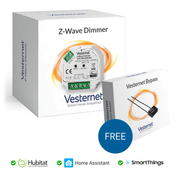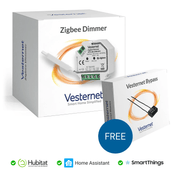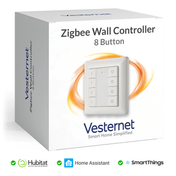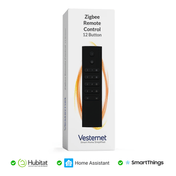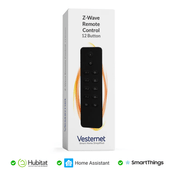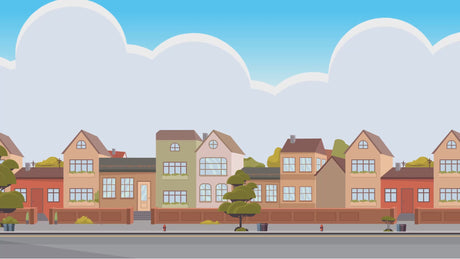Modern fire and security threats demand comprehensive monitoring solutions that go far beyond traditional standalone smoke detectors. UK property damage from fires alone exceeds £1 billion annually, while security breaches continue to rise across residential and commercial properties. Traditional systems often fail when they're needed most—single-purpose detectors may miss early fire stages, battery-powered units can fail silently, and isolated alarms provide no notification when properties are unoccupied.
Integrated smart monitoring solutions combine multiple detection technologies with instant alerts and automation capabilities, delivering 24/7 protection that adapts to real-world emergency scenarios. These advanced systems reduce false alarms through intelligent sensor fusion, enable proactive emergency response through immediate notifications, and provide comprehensive coverage that traditional systems simply cannot match.
- Multi-sensor detection for enhanced accuracy and reduced false alerts
- Smart home integration enabling automated emergency responses
- Professional-grade alerting systems with customizable notification methods
- Advanced monitoring capabilities including environmental and security sensors
1. Multi-Sensor Detection Capabilities
Professional fire and security monitoring relies on sophisticated multi-sensor devices that integrate multiple detection methods within a single unit. These advanced systems combine smoke detection, temperature monitoring, motion sensing, and environmental analysis to provide comprehensive threat assessment that single-purpose devices cannot achieve.

Key advantages of integrated detection systems:
- Reduced false alarms through sensor correlation and verification
- Earlier threat detection via multiple complementary sensing methods
- Simplified installation with fewer devices required for complete coverage
- Enhanced accuracy through intelligent algorithm processing
Multi-sensor units excel in complex environments where different types of threats may emerge simultaneously. A kitchen fire might begin with rapid temperature changes before producing visible smoke, while security breaches often involve movement combined with environmental disturbances that single sensors might miss or misinterpret.
2. Protocol Compatibility and Network Integration
Effective fire and security systems depend on reliable communication networks that ensure consistent connectivity and expandability. Protocol selection fundamentally determines system performance, with Z-Wave Plus and Zigbee offering the mesh networking capabilities essential for professional-grade alarm monitoring installations.
Network reliability becomes critical during emergencies when communication failures can prevent life-saving notifications. Mesh protocols create redundant communication paths, ensuring that monitoring signals reach their destinations even when individual network nodes fail or experience interference.

Essential protocol features for monitoring systems:
- Mesh networking providing multiple signal paths and automatic route healing
- Security encryption protecting against tampering and false signals
- Extended range capability ensuring coverage throughout large properties
- Interoperability enabling integration with existing smart home infrastructure
3. Advanced Alert and Notification Systems
Professional fire security demands sophisticated alerting mechanisms that balance immediate local notification with comprehensive remote monitoring capabilities. Modern systems provide adjustable decibel levels, visual indicators, mobile notifications, and customizable alarm patterns to ensure appropriate emergency response regardless of property occupancy.
Critical alerting features for comprehensive coverage:
- High-decibel audio alerts meeting professional emergency standards
- Visual strobe indicators for hearing-impaired occupants
- Instant mobile notifications with detailed threat information
- Customizable alarm tones distinguishing between threat types
Effective alert systems recognise that different emergencies require different responses. Fire detection demands immediate evacuation alerts, while security breaches might benefit from silent notifications that don't alert intruders to system activation. Advanced systems provide this flexibility whilst maintaining reliability under all conditions.

4. Temperature Monitoring and Rapid Detection
Integrated temperature sensors provide crucial early warning capabilities that complement traditional smoke detection methods. These sensors monitor for rapid temperature changes and preset threshold breaches, identifying fire conditions that may not initially produce visible smoke particles.
Temperature monitoring excels in detecting fast-developing fires that produce heat before smoke, particularly electrical fires and accelerant-based incidents. Professional systems typically monitor both absolute temperature thresholds and rates of temperature change, providing dual-layer fire detection capabilities.
Temperature monitoring advantages:
- Early detection of fires that develop heat before visible smoke
- Reduced false alarms from cooking vapours or steam
- Rapid response to electrical fires and similar heat-producing threats
- Continuous environmental monitoring for predictive hazard analysis
5. Security Integration and Motion Detection
Modern monitoring systems extend beyond fire detection to incorporate comprehensive security capabilities through advanced motion sensors. PIR (Passive Infrared) technology provides reliable movement detection with adjustable sensitivity settings and customizable coverage patterns that enhance overall property protection.
Motion detection security benefits:
- Automated lighting activation improving safety and security
- Intrusion alerts with immediate notification capabilities
- Activity monitoring for elderly care and property management
- Integration with fire systems for enhanced emergency response
Advanced motion sensors contribute to comprehensive protection by enabling automated responses that improve both security and fire safety. Motion-activated lighting assists emergency evacuation whilst deterring potential intruders, creating multi-layered protection that addresses various threat scenarios simultaneously.
6. Professional-Grade Audio and Visual Alerts
Emergency situations demand alerting systems that cut through ambient noise and capture immediate attention. Professional-grade sirens delivering 105dB+ audio output, combined with intense strobe lighting systems, ensure effective notification even in challenging acoustic environments or when occupants may be sleeping.
Multi-tone capabilities enable systems to communicate different types of emergencies through distinctive audio patterns. This sophistication allows occupants to understand threat types immediately, enabling appropriate responses without delays caused by uncertainty about emergency nature or severity.
Professional alerting specifications:
- High-intensity audio output exceeding 100dB for effective notification
- Bright LED strobe systems visible in daylight conditions
- Multiple alarm tones distinguishing emergency types
- Battery backup ensuring operation during power outages
7. Power Management and Backup Systems
Reliable power management ensures continuous monitoring capability regardless of mains power availability. Professional systems incorporate mains power operation with intelligent battery backup, providing uninterrupted protection whilst minimising maintenance requirements through efficient charging systems.
Essential power management features:
- Mains power operation with automatic battery switchover
- Long-life backup batteries supporting extended outage periods
- Low battery alerts preventing silent system failures
- Energy-efficient operation maximising battery longevity
Battery backup becomes particularly critical during severe weather events when power outages often coincide with increased fire and security risks. Professional systems maintain full operational capability throughout extended power disruptions, ensuring protection precisely when it's needed most.
8. Environmental Monitoring and Air Quality
Advanced monitoring systems incorporate comprehensive environmental sensors that track air quality parameters including CO2 levels, volatile organic compounds (VOCs), humidity, and particulate matter. These capabilities extend protection beyond fire detection to encompass broader health and safety monitoring.
Environmental monitoring provides predictive hazard prevention by identifying conditions that may lead to fires or health risks before they become critical. High CO2 levels might indicate combustion issues, whilst elevated VOCs could signal chemical hazards or developing electrical problems.

Environmental monitoring capabilities:
- CO2 monitoring for combustion safety and air quality assessment
- VOC detection identifying chemical hazards and electrical issues
- Humidity tracking preventing mould growth and structural damage
- Particulate monitoring for comprehensive air quality analysis
9. Tamper Protection and Security Features
Professional alarm monitoring systems incorporate robust anti-tamper mechanisms and encryption protocols that protect against interference or deliberate disabling attempts. These security features ensure system integrity even when facing sophisticated threats designed to compromise monitoring capabilities.
Critical security protection features:
- S2 security encryption preventing signal interception and spoofing
- Tamper detection alerts for physical interference attempts
- Automatic self-testing ensuring continuous operational verification
- Secure communication protocols resistant to jamming and manipulation
Advanced tamper protection extends beyond physical security to encompass wireless communication integrity. Professional systems continuously verify signal authenticity and detect attempts at jamming or signal manipulation, maintaining reliable operation even under direct attack scenarios. Additional protection includes door and window sensors that enhance perimeter security monitoring.
Our Fire and Security Monitoring Recommendations
MCO Home Multi Sensor - Comprehensive Environmental Monitoring
For professional multi-environment monitoring, the Z-Wave Plus MCO Home Multi Sensor (£330) delivers unparalleled detection capabilities with nine integrated sensors including smoke, temperature, motion, humidity, CO2, VOC, and noise monitoring. The clear TFT display provides real-time status updates, whilst advanced algorithms ensure accurate threat assessment and reduced false alarms.
Fibaro Smoke Sensor - Reliable Fire Detection
The Z-Wave Fibaro Smoke Sensor (£65) offers compact wireless monitoring with optical smoke detection, integrated temperature sensing, and tamper protection. RGB LED status indicators provide immediate visual feedback, whilst the sleek design integrates seamlessly with any interior whilst maintaining professional detection capabilities.
Nice Smoke Control - Universal Compatibility
For universal Z-Wave compatibility, the Nice Smoke Control (£82) provides predictive hazard analysis with mobile alerts and comprehensive fire detection. The system's advanced algorithms reduce false alarms whilst ensuring rapid response to genuine fire threats through intelligent sensor processing.
Aeotec Siren 6 - Professional Emergency Alerting
The Z-Wave Plus Aeotec Siren 6 (£73) delivers professional-grade emergency alerting with 105dB audio output, visual strobe lighting, and backup battery power. Fifteen customizable alarm tones enable threat-specific alerts, whilst S2 security encryption ensures reliable integration with professional security systems.
Aeotec SmartThings Motion Sensor - Integrated Security Monitoring
For motion-based security integration, the Zigbee Aeotec SmartThings Motion Sensor (£35) provides reliable movement detection with temperature monitoring capabilities. Seamless smart home integration enables automated lighting responses and security alerts, enhancing overall property protection through comprehensive sensor integration.
Conclusion
Implementing comprehensive fire and security monitoring requires careful evaluation of detection capabilities, network integration, alert systems, and environmental monitoring features to ensure reliable 24/7 protection. The combination of multi-sensor detection, professional-grade alerting, and intelligent automation provides the foundation for effective emergency response and complete property protection that adapts to real-world threat scenarios.
Begin by assessing your specific monitoring requirements, existing smart home infrastructure, and coverage needs, then select devices offering appropriate detection methods, reliable connectivity, and expandable capabilities. Professional installation may be beneficial for complex systems, whilst regular testing and maintenance ensure optimal protection levels throughout system lifecycle.
Explore Vesternet's comprehensive fire and security collections to discover monitoring solutions tailored to your specific requirements. Contact our smart home experts for personalised advice on creating integrated protection systems that deliver professional-grade security and fire safety monitoring capabilities designed for your property and lifestyle needs.










